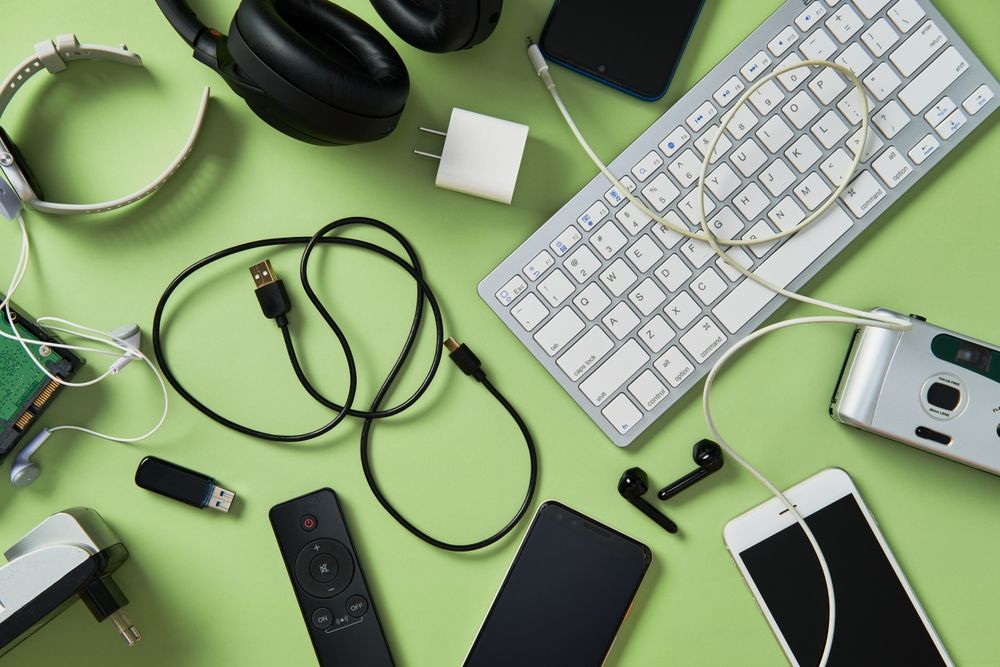Technology moves fast, and before you know it, your once top-of-the-line smartphone, tablet, or laptop feels outdated. But instead of letting it collect dust in a drawer, that old device can actually put cash back in your pocket. Whether you’re upgrading to a new model or simply decluttering, there are smart ways to trade in or sell your electronics for the highest possible value. The key is knowing when, where, and how to make the move.
Understand the Timing: When to Sell or Trade
Timing is everything in the tech resale market. Devices depreciate quickly—often within months of a new model’s release. Selling or trading in before the next major launch can help you secure the best offer.
For example, if a new smartphone is expected to release in September, listing your current model in late August typically yields higher prices. Once the new model is announced, demand for older versions drops almost overnight.
You can also time your sale around seasonal demand. The months leading up to the holidays or back-to-school season are when many buyers are looking for affordable used tech. Acting during these periods can increase your chances of selling quickly and for a premium price.
Choose Between Selling and Trading In
Before you move forward, decide whether you want to sell your device directly or trade it in through a retailer or manufacturer. Each option has advantages depending on your priorities.
-
Selling directly (through platforms like marketplaces or local buyers) often gives you the highest payout, but it takes more time and effort. You’ll need to handle listings, communication, and secure transactions yourself.
-
Trading in through official programs is faster and easier. Many major tech companies and carriers offer trade-in credit toward new purchases or store gift cards. The payout may be slightly lower, but you avoid the hassle of finding a buyer.
If convenience matters more than maximizing every dollar, a trade-in makes sense. If you want the absolute best return, direct sale is the way to go.
Research Market Value Beforehand
Before listing or trading in your device, check current resale prices. Search online marketplaces to see what similar models—same brand, year, and condition—are selling for.
You can also use trade-in value estimators available on major retailer websites. These tools give an instant quote range based on your device’s specifications and condition.
Knowing the market value helps you avoid underselling your device and gives you a benchmark for negotiating with buyers or choosing between trade-in programs.
Clean, Restore, and Prepare Your Device
Presentation can make a big difference in value. Buyers and trade-in programs prefer devices that look clean and well-maintained. Before selling or trading:
-
Back up your data – Transfer photos, contacts, and files to your new device or a cloud storage service.
-
Perform a factory reset – This protects your privacy by erasing personal information and returning the device to its original settings.
-
Clean the exterior – Use a soft cloth to wipe fingerprints, smudges, and dust from the screen and casing.
-
Include accessories if possible – Original boxes, chargers, and cases can boost resale value.
-
Check for damage – Minor scratches may not matter, but cracked screens or dead batteries reduce your payout significantly.
If repairs are affordable, fixing small issues like a weak battery or chipped corner may be worth it before selling.
Take High-Quality Photos and Write Honest Descriptions
If you’re selling online, your listing is your first impression. Clear photos and transparent details build buyer trust and help you stand out in crowded marketplaces.
-
Take photos from multiple angles with good lighting.
-
Show the device powered on to prove functionality.
-
Highlight any accessories included, such as chargers or cases.
-
Be upfront about imperfections—honesty prevents returns and negative feedback.
A well-written, factual description paired with strong visuals often sells faster and for closer to asking price.
Compare Trade-In Programs
If you’re opting for a trade-in, don’t just accept the first offer. Different programs value the same device differently. Compare quotes from multiple retailers, carriers, or manufacturers before committing.
Some trade-in programs also offer bonus credits when you upgrade to a new model. For instance, trading in during promotional events can yield 10–20% higher credit than usual.
Look for programs that:
-
Offer instant credit or direct payment
ADVERTISEMENT -
Cover shipping costs or provide prepaid labels
-
Guarantee your quoted value after inspection
-
Allow trade-ins for store credit even without a new purchase
Taking a few minutes to compare offers can translate to extra dollars in your account—or a bigger discount on your next upgrade.
Consider Certified Refurbishers and Eco Buyback Programs
Beyond mainstream trade-ins, many eco-focused companies and refurbishers buy used electronics for fair prices. These programs refurbish devices, recycle parts responsibly, and help reduce electronic waste.
Certified refurbishers often offer better rates for slightly older models or damaged devices that may not qualify for trade-in programs. Selling through these channels also ensures your old tech gets a second life instead of ending up in a landfill.
If environmental impact matters to you, this is one of the most rewarding ways to sell. You earn some money back while contributing to sustainability.
Bundle or Sell Accessories Separately
Don’t overlook your accessories. Items like protective cases, screen protectors, or wireless chargers can be sold along with your device or listed separately.
Bundling accessories adds perceived value and convenience for buyers, while selling high-demand items like extra chargers or headphones separately can generate extra profit. Assess which approach brings in more overall value before listing.
Negotiate Smartly and Secure Your Payment
When selling directly to buyers, be prepared for negotiation. Start slightly above your ideal price to give room for discussion. Respond quickly to inquiries and maintain professionalism—buyers are more likely to pay your asking price if they feel confident in your reliability.
For safety:
-
Meet buyers in public places if selling locally.
-
Avoid sharing personal details beyond what’s necessary.
-
Use secure payment platforms that protect both parties.
Once payment clears, remove your SIM card, finalize the factory reset, and hand over the device with any agreed accessories.
Watch for Trade-In Promotions During Upgrade Season
Tech brands often run limited-time events that boost trade-in values or add bonuses for upgrading. These promotions typically align with new product launches or seasonal sales.
Keep an eye out for these windows—they can add $100 or more in value to your trade-in. If you’re not in a rush, waiting for a promotional period can be one of the simplest ways to earn more without doing extra work.
Repurpose or Donate Older Devices
If your device is too old or damaged to sell, don’t throw it away. Many organizations accept donations of used phones, tablets, and laptops for refurbishment or recycling.
Some programs even offer small credits or discounts in exchange for responsible recycling. It’s not a major money-saver, but it’s a meaningful way to reduce waste while potentially offsetting the cost of future tech purchases.
Keep Receipts and Records
Once you’ve sold or traded in your device, keep a copy of the receipt or transaction record. These documents can be helpful for:
-
Confirming your trade-in credit or payment amount
-
Tracking warranty transfers for CPO devices
-
Declaring taxable income if you sold multiple devices for profit
Good recordkeeping ensures transparency and protects you in case of disputes or warranty issues down the line.
Selling or trading in your old devices doesn’t have to be complicated—and it certainly shouldn’t leave money on the table. With the right preparation, timing, and platform, you can turn aging tech into real cash or credit toward your next upgrade.
The secret is treating the process like any smart financial move: research, compare, and plan ahead. Every careful step—whether it’s cleaning the device, checking trade-in values, or timing the market—helps you squeeze out maximum value.
Your old electronics might be yesterday’s tech, but with the right strategy, they can still power tomorrow’s purchases.





